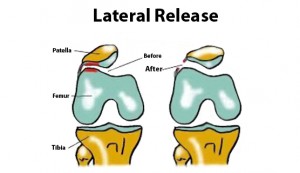Knee Repair with Lateral Release or Microfracture
Knee Repair with Lateral Release or Microfracture surgery is a common procedure used to repair damaged knee cartilage. Cartilage helps cushion and cover the area where bones meet in the joints.
Preparation for Surgery
Preparations depend on your surgeon. In general, you should:
- Avoid certain medications. Your doctor may want you to avoid taking medications or dietary supplements that can increase your risk of bleeding.
- Fast beforehand. Depending on the type of anesthesia you’ll have, your doctor may want you to avoid eating, or drinking six to twelve hours before your procedure.
- Arrange for a ride. You won’t be allowed to drive yourself home after the procedure, so make sure someone will be available to pick you up. If you live alone, ask someone to check on you that evening or, ideally, stay with you the rest of the day.
- Choose loose clothing. Wear loose, comfortable clothing baggy gym shorts, slip on shoes for example, if you’re having knee arthroscopy so you can dress easily after the procedure.
Knee Repair Surgery
Three types of anesthesia may be used for knee arthroscopy surgery:
- Medicine to relax you, and shots of painkillers to numb the knee
- Spinal (regional) anesthesia
- General anesthesia (you will be asleep and pain-free)
The surgeon will make a 1/4-inch surgical cut (incision) on your knee. A long, thin tube with a camera on the end is placed through this cut. This is called an arthroscope. The camera is attached to a video monitor in the operating room. This tool lets the surgeon look inside your knee area and work on the joint.
- The surgeon makes another surgical cut and passes instruments through this opening. A small pointed tool called an awl is used to make very small holes in the bone near the damaged cartilage. These are called micro fractures. These holes release cells in your bones that build new cartilage to replace the damaged tissue.
Knee Repair with Lateral Release or Micro Fracture Recovery
- Physical therapy may begin in the recovery room right after your surgery. A machine gently exercises your leg for 6 to 8 hours a day for several weeks. This machine is most often used for 6 weeks after surgery.
- Ask your surgeon how long you will use it. Your doctor will increase the exercises you do over time until you can fully move your knee again. The exercises may make the new cartilage heal better. You will need to keep your weight off your knee for 6 to 8 weeks unless told otherwise.
- You will need crutches to get around. Keeping the weight off the knee helps the new cartilage grow.
Risks for the Procedure
As with any surgical procedure, complications can occur. Some possible complications may include, but are not limited to, the following:
- Bleeding into the knee joint.
- Damage to the cartilage, meniscus, or ligaments in the knee.
- Formation of a blood clot in the leg.
- Injury to a blood vessel or nerve.
- Infection in the knee joint.
- Knee stiffness following the procedure.
- Compartment syndrome.

